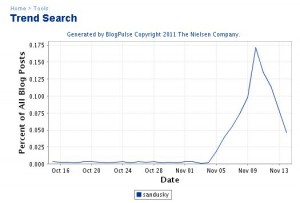Okay, if you’re ready for some data journalism — I have a suggestion for how to track what the U.S. government is really doing in your area. Yes it will take some time, but will likely net a powerful story.
 Use TRAC, an online site of federal statistics. It’s one of the best kept secrets here at the Newhouse School –the Transactional Records Access Clearinghouse, @tracreports. Sue Long, a statistician and FOIA pioneer, and David Burnham, a former New York Times investigative reporter, paired together years ago to watchdog first the IRS, and then other agencies by crunching their data in ways to show patterns and comparisons.
Use TRAC, an online site of federal statistics. It’s one of the best kept secrets here at the Newhouse School –the Transactional Records Access Clearinghouse, @tracreports. Sue Long, a statistician and FOIA pioneer, and David Burnham, a former New York Times investigative reporter, paired together years ago to watchdog first the IRS, and then other agencies by crunching their data in ways to show patterns and comparisons.
TRAC’s goal is to help journalists, and ultimately the public, understand the staffing, spending, and enforcement activities of the federal government. As TRAC’s website explains: “…What do agency actions indicate about the priorities and practices of government? How do the activities of an agency or prosecutor in one community compare with those in a neighboring one or the nation as a whole? When a new law was enacted or amended, what impact did it have on agency activities?”
This week TRAC released new web-based data tools to help monitor Immigration and Customs Enforcement’s (ICE’s) exercise of prosecutorial discretion in the nation’s Immigration Courts. To learn more sign up for the webinar Wed., Dec. 7, at 2:00pm EST on these new data and findings. Contact trac@syr.edu to register.
Here’s one of the findings: “…(in) Immigration Court deportation proceedings during July-September 2011… just 13.8 percent of the total …were charged with having engaged in criminal activities. ” That’s down from the previous year and different from what the White House has been touting. So what does it say about the time and money spent getting those cases to court? Now, there’s a story.






